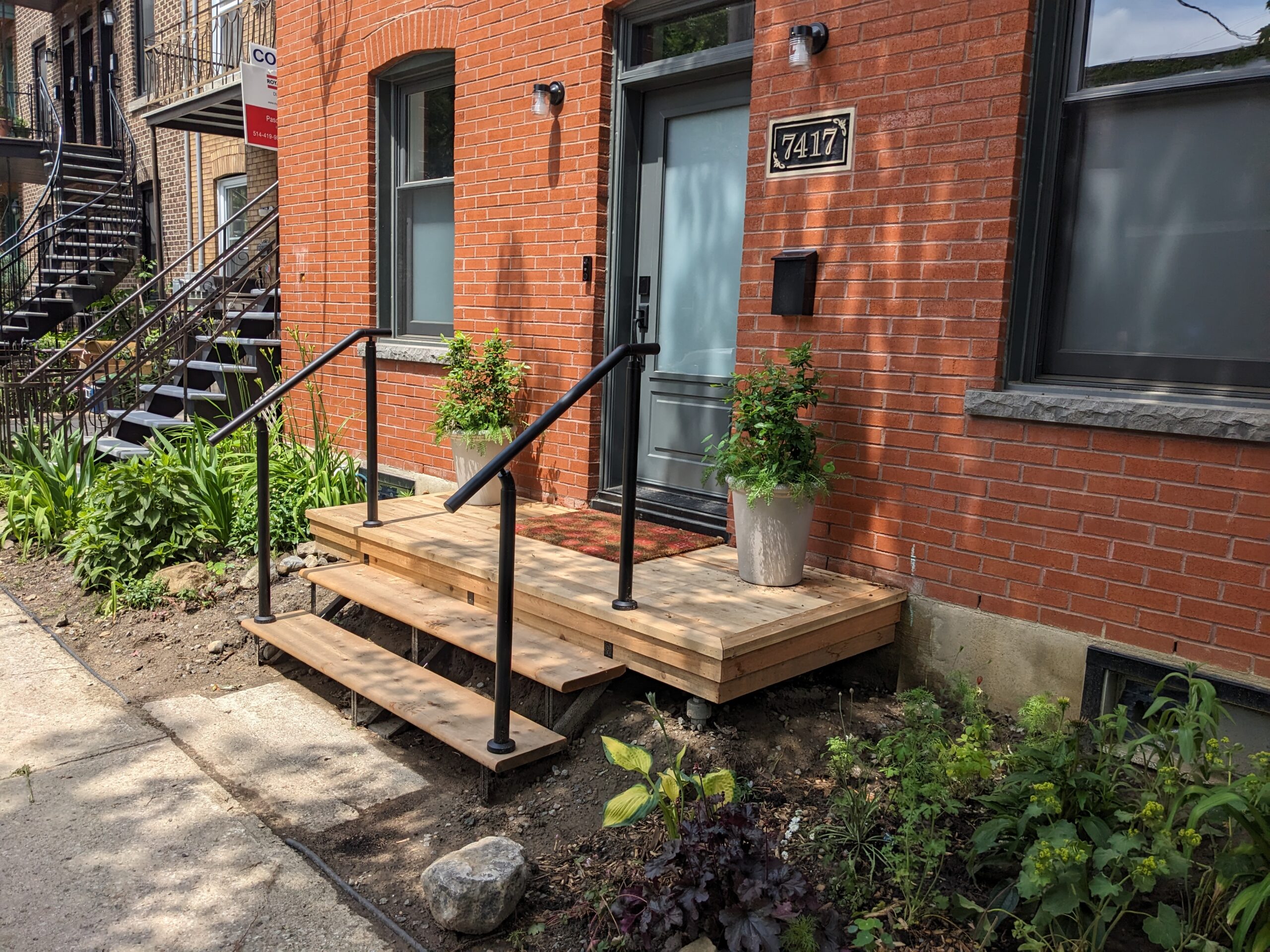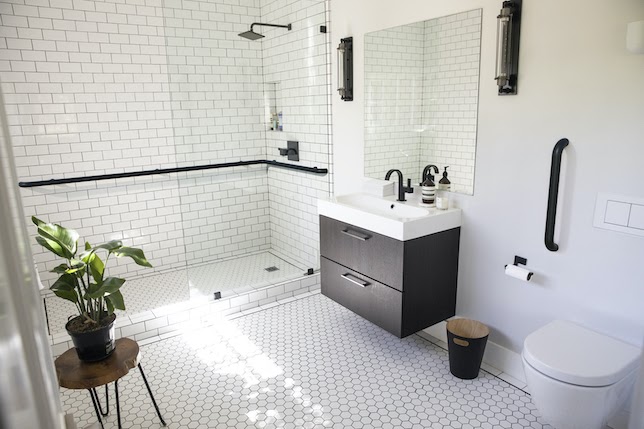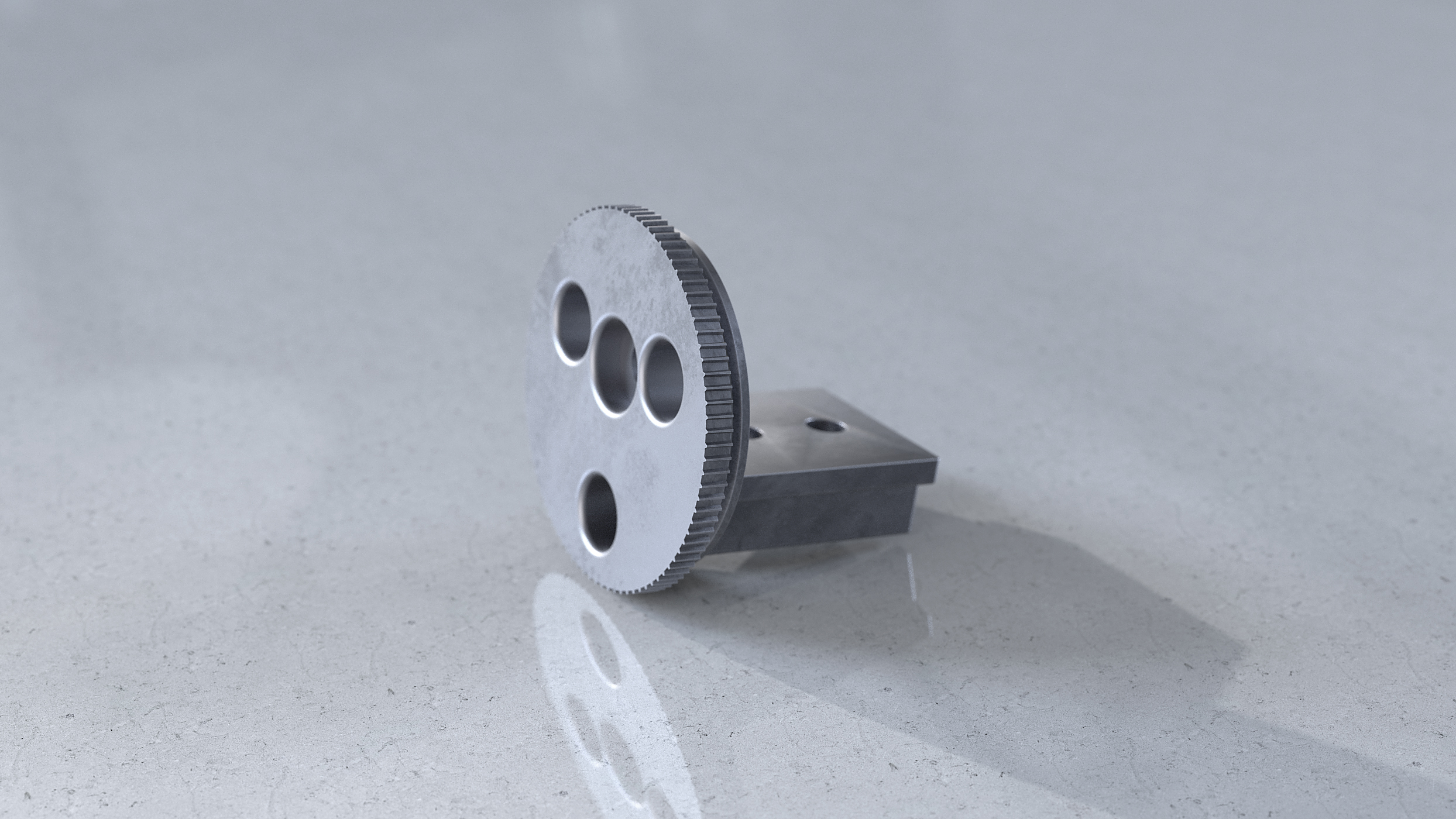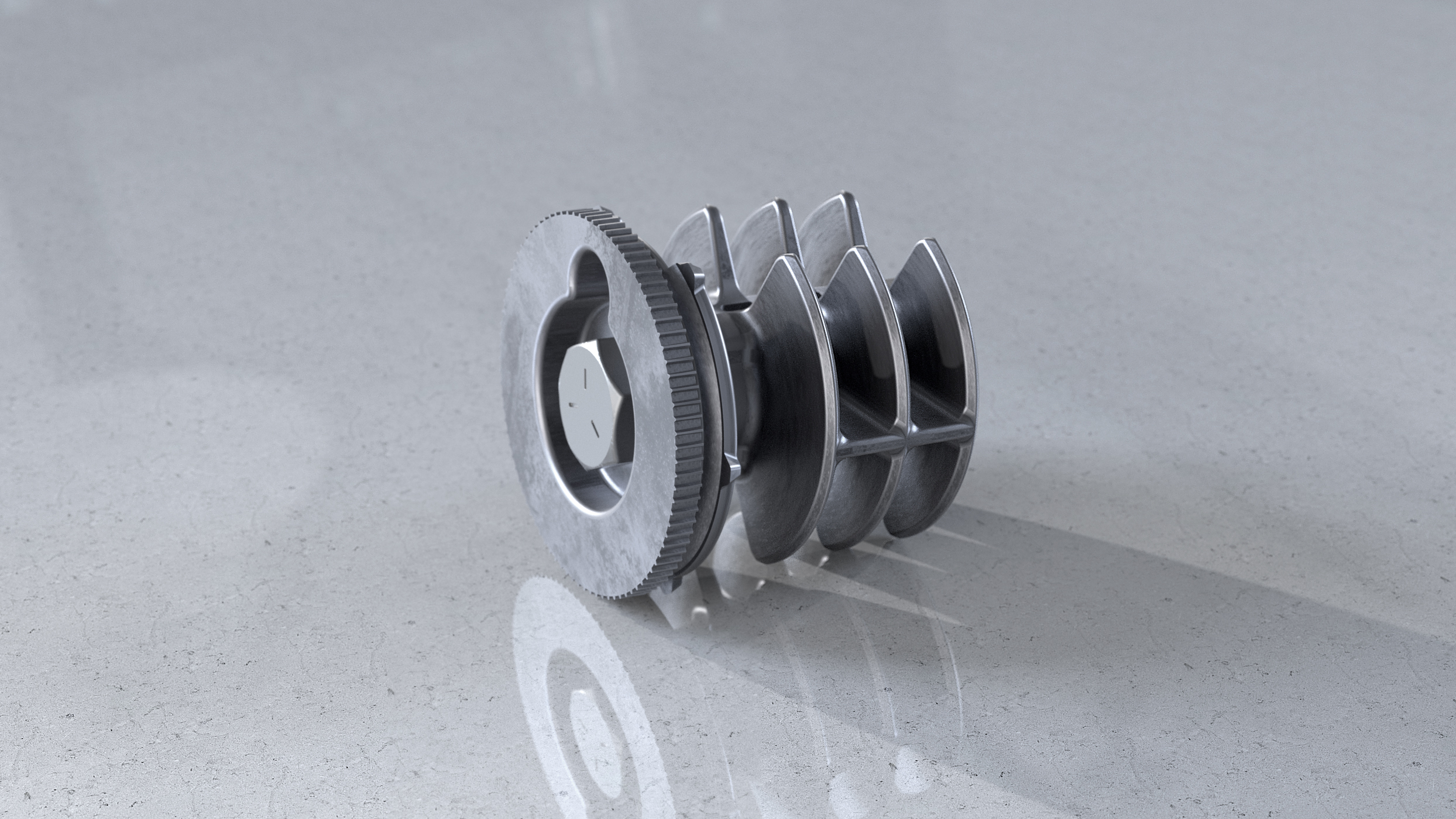Each day, your loved ones—parents, aunts, uncles, and grandparents—get a little older, and although you might live comfortably in our home just fine, it’s important to make sure your home is prepared for those who are visiting.
Whether you’re hosting Thanksgiving or welcoming a family member into your home permanently, there are measures you can take to senior proof your home, making your home safe for elderly family and friends.
There are a number of ways to fall-proof your home for elderly family members, some of which include removing carpets, decluttering spaces near stairs, improving lighting, and, most effectively, installing handrails (and grab rails).
Let’s take a closer look at the best code to follow when preparing your home.
ADA Compliance: The Best Code to Follow
For residential buildings, the International Residential Code has guidelines and standards for building or renovating a residential property. Beyond that, the Americans with Disabilities Act has its own set of standards for creating an environment that is accessible to as many people with as many different abilities as possible.
There is some overlap between the IRC and the ADA standards, but when it comes to senior proofing your home, the ADA Standards for Accessibility is the best code to follow to ensure the safest possible environment.
Ramps and Stairs
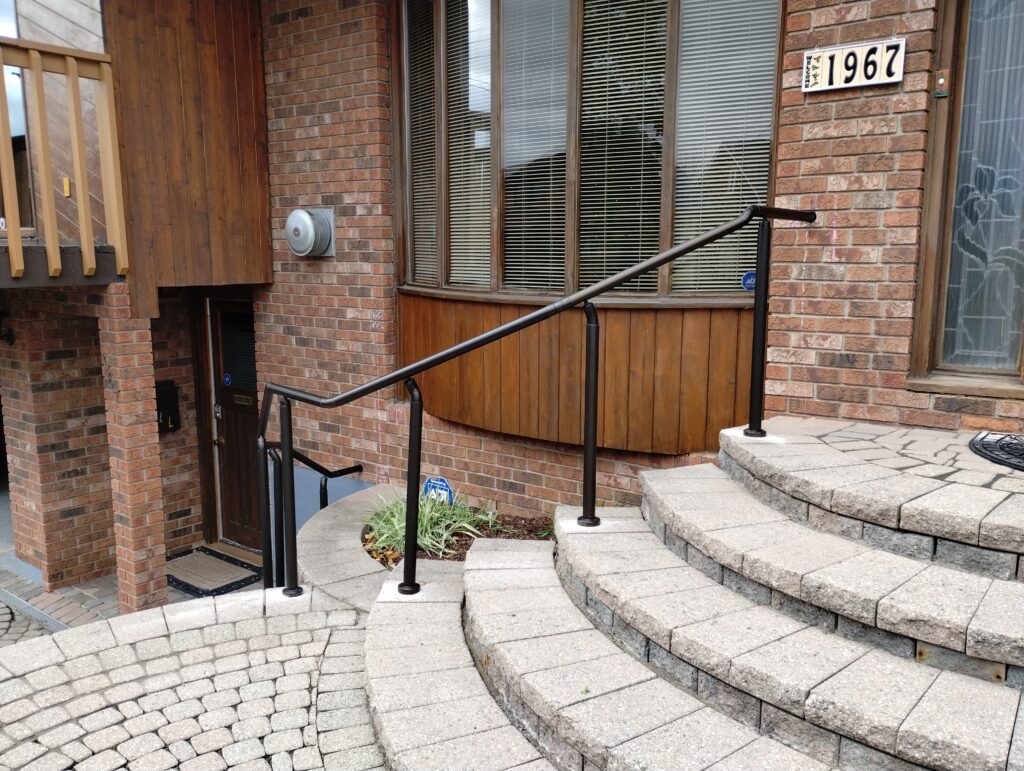
Ramps and stairs are notoriously difficult places for elderly people to navigate. Limited mobility, stability issues, and weakened grasp all exacerbate already tricky places. You should pay special attention to ramps and stairs when you are elder proofing your home.
Providing handrails on both sides of a stairway or ramp helps prevent falls by adding a third point of contact whether they are traveling up or down. Removing clutter and decor from stairs and ramps helps in fall proofing your home, as does good lighting so the pathway is not only free from obstruction, but is also illuminated.
Dimensions
The IRC doesn’t specify dimensions for ramps. Stairways, however, must be at least 36” wide at all points above the handrail height (34”-38”) and below the required head room height (at least 6’ 8”). The clear width of stairways at and below the handrail height must be at least 31 ½” where a handrail is installed on one side, and 27” where handrails are installed on both sides. These dimensions allow for ample room to travel up and down the stairs without obstruction.
Placement
Ramps should replace stairs in places where it is difficult for the senior to climb them or when someone uses a wheelchair for mobility. They are most commonly seen on the exterior of a home where stairs would normally be the means of changing elevation.
Ramps are difficult to install except in places that only have a few stairs, as stairs are usually necessary to change floors inside the home. Full flights of stairs will likely remain, and while you can explore options like a chair lift for stairs, adding safety measures like sturdy, ADA compliant handrails, good lighting, and removing clutter and carpet will save you money while increasing the safety of your home.
Handrails
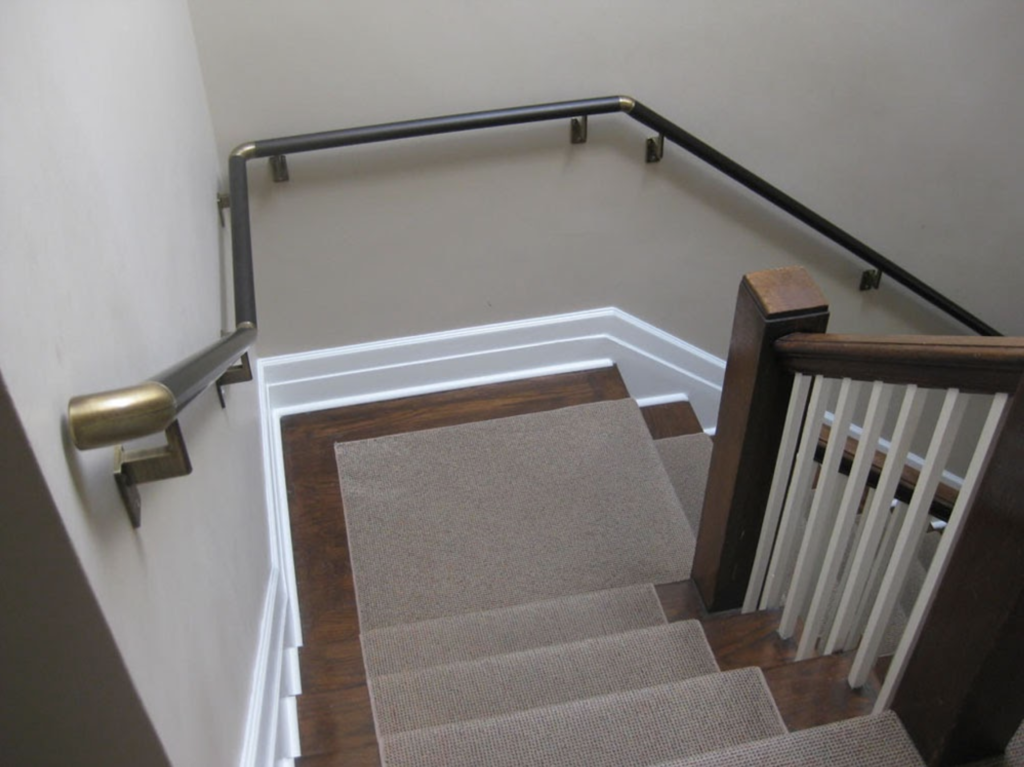
According to ADA standards and the IRC, handrails on stairs and ramps must be installed between 34” and 38” above the stair tread nosing. They must meet the guidelines for a Type 1 or Type 2 handrail, though the ADA standards only allow for Type 1 handrails. Handrails must have at least 1 ½” of clearance between the handrail and adjacent wall.
Handrails must be continuous for the full length of a flight of stairs or a ramp run. The IRC allows for this continuity to be interrupted by newel posts at a turn in a flight with winders, at a landing, or over the lowest tread, however, the ADA recommends a continuous handrail regardless of turns or elevation changes.
The ADA also provides for handrail extensions that provide extra support as people navigate slope changes.
Bathrooms
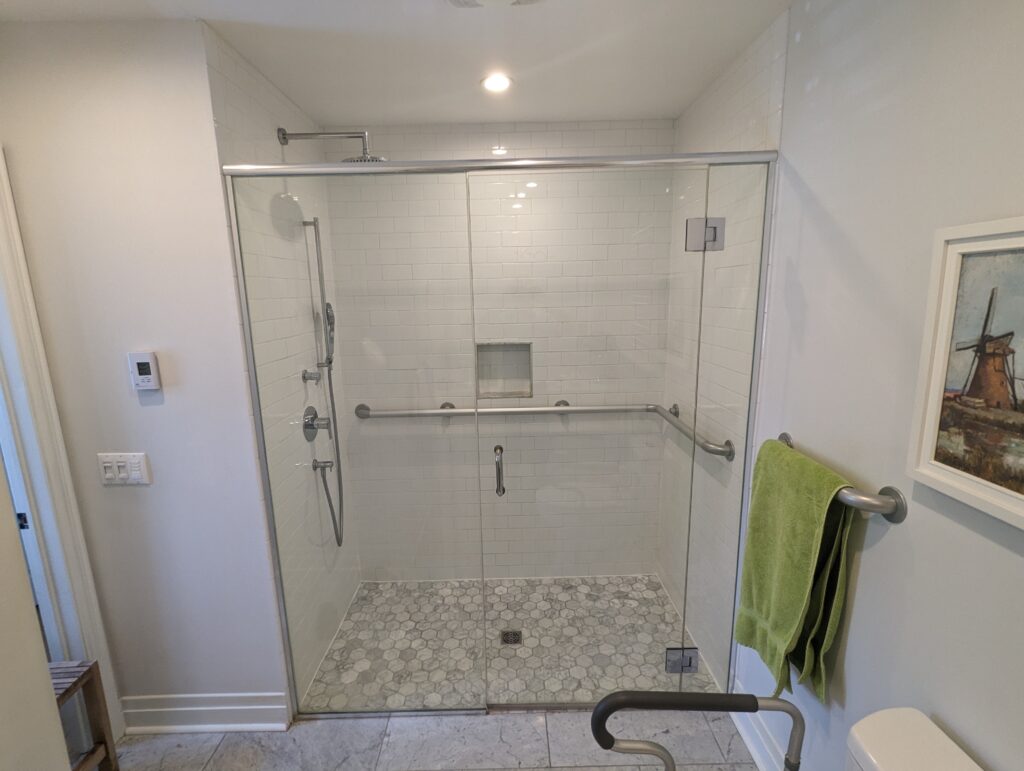
Bathrooms are a notoriously treacherous environment for anyone with mobility or stability issues. Ensuring a safe bathroom design is essential as you fall-proof your home.
Step-Free Design
Creating a bathroom design free from steps increases the safety level in this tricky space. Installing a walk-in shower with a seat is a great step towards senior proofing the bathroom.
Grab Bars
Grab bars provide additional support as people raise and lower themselves onto the toilet or into the bathtub. They are also a point of contact as elderly members of the home move from one area to another.
Non-Slip Mats
Providing non-slip mats in the shower and on the floor next to the bathtub and toilet helps to fall proof your home by giving seniors secure footing as they navigate transitions.
Lever Faucets

Lever faucets are easier to manipulate than knob handles, especially for anyone with decreased grip strength. Choosing a faucet with a lever handle makes it much easier for elders to maintain control of their hygiene.
Kitchens

Kitchens can be a difficult place to tackle as you fall-proof your home. There are countertops that can be used as support, but kitchens can be small and difficult to navigate. A few changes can make it much safer.
Lighting
Creating a brightly lit area is a good practice for any room when you are elder proofing your home, but it is especially important in the kitchen. Something as simple as making a sandwich can have dire consequences if it’s difficult to see what you’re doing. Additional lighting can make a huge difference when it comes to safety.
Use Contrasting Colors
Using contrasting colors in the design to differentiate between cabinets and flooring can help make walking paths and obstructions more obvious.
Lever Door Handles

Level door handles fall under the same category as lever faucets when it comes to making things easier for elderly with decreased grip strength. Rather than having to curl their hands around a knob, lever door handles allow them to use an open hand with very little grip strength needed.
Install Easy Grasp Handles
Easy grasp handles ensure seniors can get the most secure grip, reducing the risk of injury.
Take the Next Step Towards Elderly Proofing Your Home with Promenaid
Promenaid handrails exceed ADA Guidelines and offer the best in safety when you’re elder proofing your home. Creating a safe and secure environment is simple with our easy-to-install aluminum handrails and grab bars.
Contact the handrail experts at Promenaid today to begin making your home safe for elderly friends and family.



